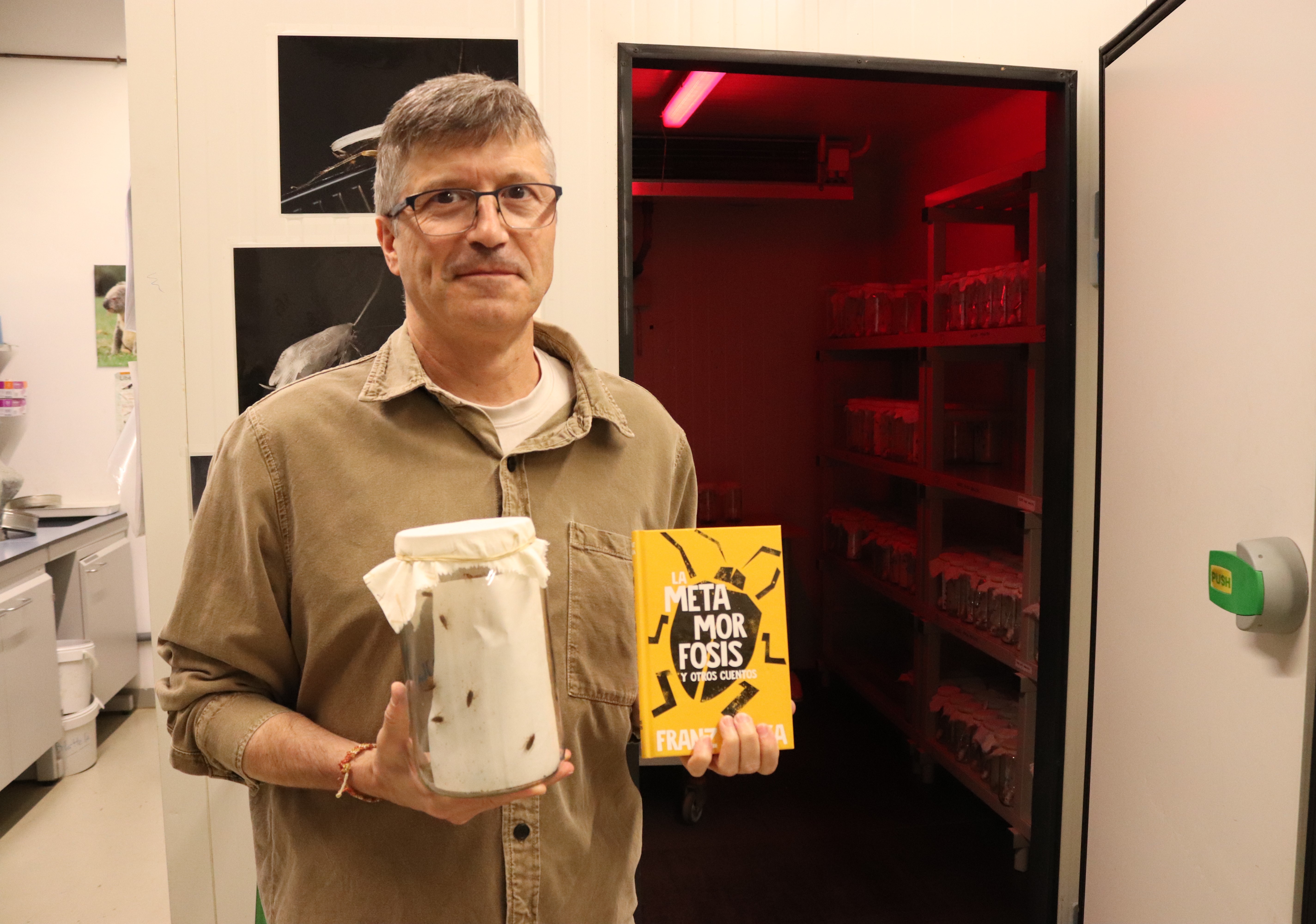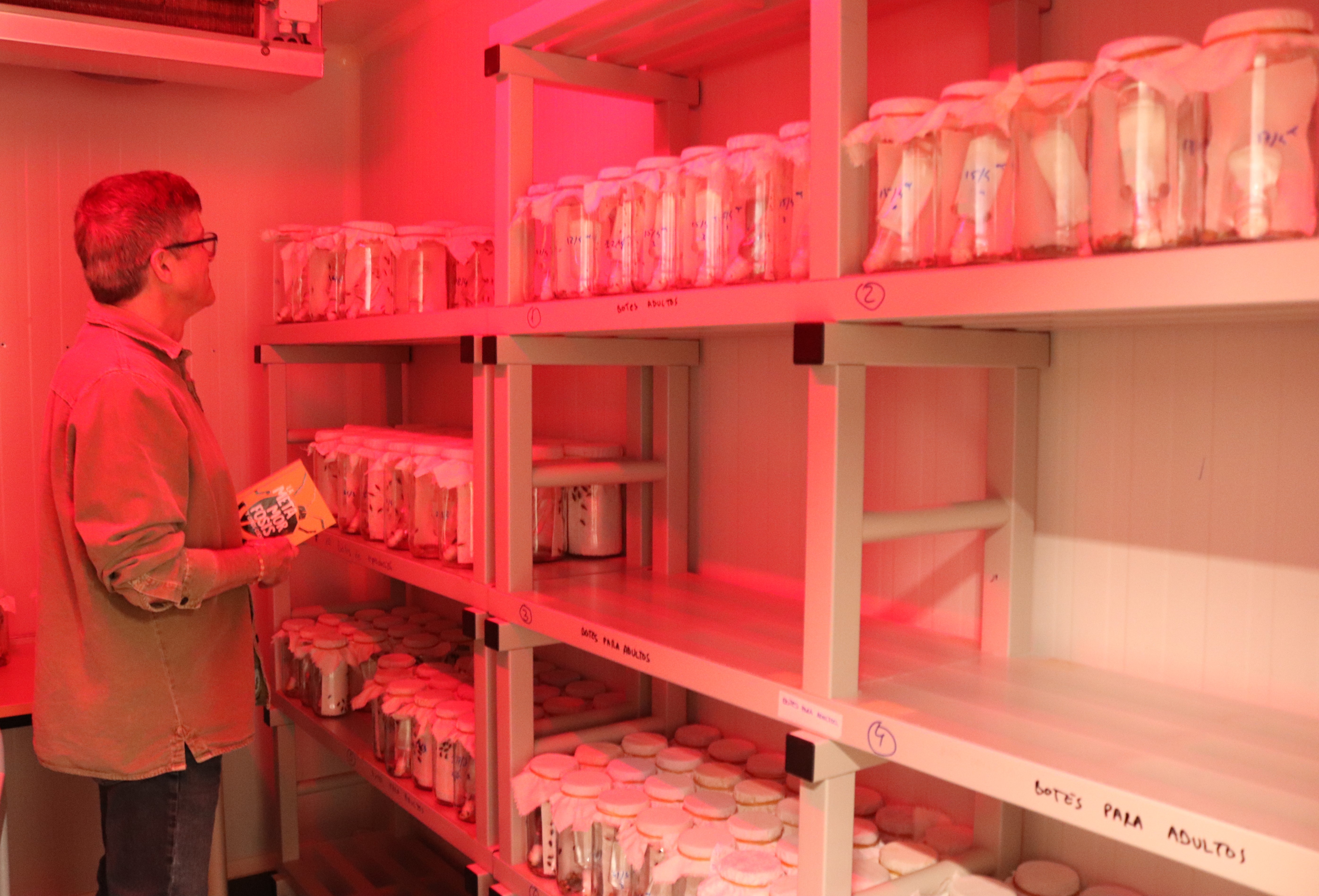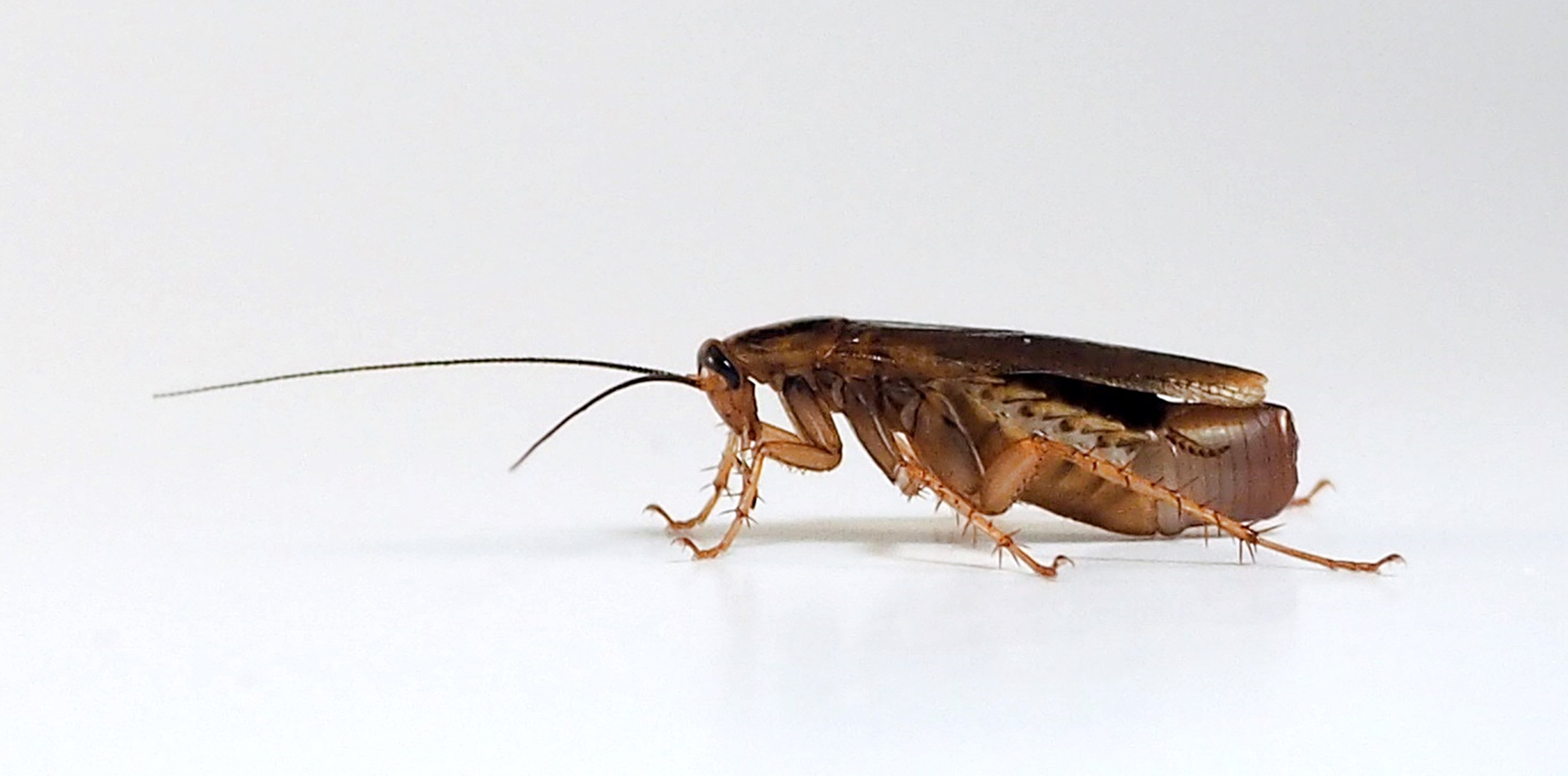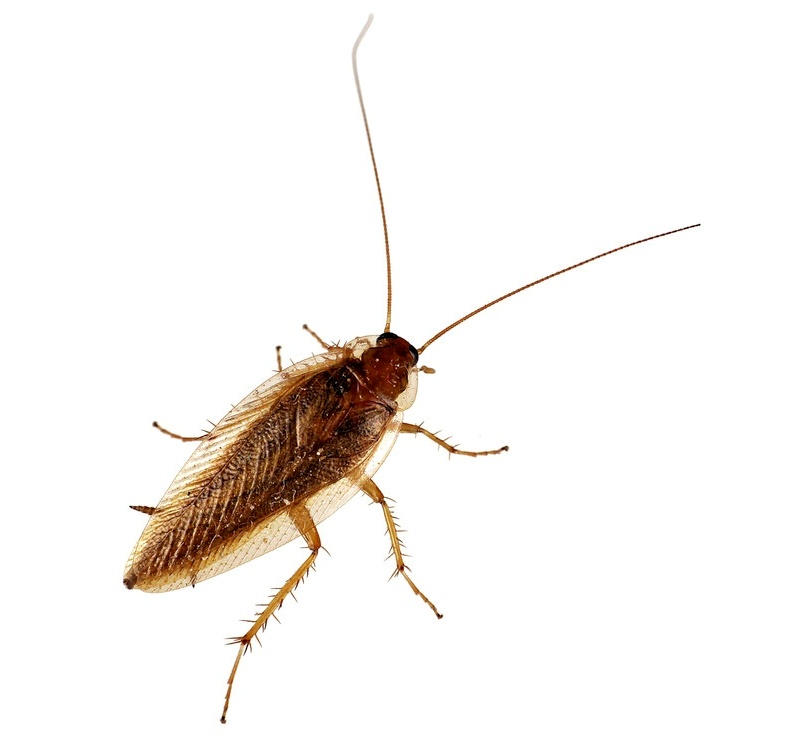Lectures de Sant Jordi amb l’IBE: La metamorfosi
Lectures de Sant Jordi amb l’IBE: La metamorfosi
La metamorfosi de Franz Kafka, publicat el 1915, planteja qüestions tan irresolubles com la identitat humana, el valor de l’individu o el concepte de família. Tanmateix, el seu autor mai no va revelar la identitat del “monstre” en què es converteix el protagonista, i les pistes que hi trobem al llarg del relat encenen el debat un segle després.
En parlem amb José Luis Maestro, Investigador Principal del grup de Senyals Nutricionals en Insectes de l’Institut de Biologia Evolutiva (IBE), per tal d’esbrinar els secrets d’un dels llibres de ficció més controvertits del món de l’entomologia.

Recomanaries "La metamorfosi" per Sant Jordi?
És un relat molt interessant per lo grotesc: un home que, de cop, es desperta transformat en un insecte tal com ens diu ja a la primera frase del relat. Em resulta curiós i sorprenent l'inici de la trama i molt interessant saber com es resoldrà.
Per a qualsevol persona interessada en la ciència és impossible que no li cridi l’atenció un llibre que es diu “La metamorfosi”. És curiosa la traducció del títol original del relat, que en alemany és “Die Verwandlung”, és a dir, “La transformació”. “La metamorfosi” remet a un canvi gairebé màgic, irreversible i que ens fa pensar en mitologies gregues. Però també, és clar, en la història natural d’uns quants grups d’animals, en particular dels insectes, pels quals aquesta transformació ja no és quelcom màgic perquè cada vegada entenem millor com funciona i com es regula.
I algú a qui li agradin els insectes no pot deixar d'estar analitzant tota l'estona la descripció que es fa del protagonista una vegada s'ha transformat, i inclús tractar d'identificar de quin insecte es tracta per la descripció de la seva morfologia i el seu comportament.
Podríem intentar esbrinar de quin insecte es tracta a partir de la descripció que en fa al llarg de la novel·la?
Probablement en Kafka devia pensar en diferents insectes a l'hora de descriure el monstre en què es va transformar en Gregor Samsa, potser inclús barrejats i pensant que serien coses similars.
La primera vegada que en el llibre es descriu el resultat d'aquesta transformació és, precisament, a la primera frase a on es diu que el Gregor es troba convertit en un "Ungeziefer", que no vol dir exactament insecte sinó que és un terme que indica un animal nociu, perjudicial. Per altra banda, hi ha un moment al relat que l'assistenta li diu al Gregor "Mistkäfer", "escarabat piloter". Però, tot i que la seva descripció en alguns trets sembla apropar-lo als coleòpters, com l'esquena bombada, alguns altres no semblen tan a prop dels escarabats, com que aquesta esquena no és tan dura com ho seria si fossin èlitres.
De fet, segur que l'insecte que l'autor tenia més a prop per a fixar-se devia ser la panerola, per ser una plaga domèstica a tot arreu i també, sens dubte, a la Praga a on vivia. A més, alguns dels comportaments que descriu són típics de les paneroles. És significatiu que digui que estava molt còmode ficat ben estret a sota de la calaixera perquè això és una característica de les paneroles domèstiques a qui el seu disseny els hi permet passar per espais ben estrets i amagar-se allà a on se senten ben protegides.

José Luis Maestro a l'insectari de l'IBE
També diu el relat que li agraden els menjars més aviat fets malbé que no pas els frescos. Tot i que es pot pensar que això seria una característica de les paneroles perquè les trobem cercant menjar a les escombraries, en realitat menjaran allò que trobin, fresc o podrit, i les trobem a la brossa perquè és allà o on troben menjar més fàcilment.
Per altra banda, alguns altres trets que descriu són confusos. Diu que té moltes potes, però mai diu que en té sis, com és característic dels insectes. També diu que quan es mou va deixant un rastre d'una mena de substància enganxosa que no fan les paneroles però tampoc, en general, cap insecte.
Trobes a faltar algun tret de les paneroles que podria haver donat molt de joc a la història?
Un dels trets que és comú a totes les paneroles i a la majoria dels insectes i que l’autor podria haver explotat més en el relat seria l’ús de les antenes, que són un òrgan sensorial molt important. Pel que fa a les paneroles antropòfiles domèstiques, és a dir, les que poden viure amb nosaltres, una de les seves característiques és que són gregàries i els agrada estar en contacte les unes amb les altres. En el cas de Gregor Samsa el gregarisme faria que tingués molta més tendència a sortir de la seva habitació i buscar la companyia dels seus familiars.

Panerola. Crèdit a Cristina Olivella.
Es podria dir que en Samsa no en sap gaire de paneroles en un inici, així com tampoc la seva família, que el tracta de “monstre”. Què hauria fet un biòleg expert en paneroles en el seu lloc? Quin seria el “protocol de supervivència” si mai ens hi transformem?
Depèn d’en quina panerola ens transformem, és clar. Les paneroles silvestres tenen cadascuna la seva forma de vida.
Si ens transforméssim en paneroles domèstiques, com la panerola alemanya, Blattella germanica - que és l’espècie que estudiem principalment en el nostre grup - el que buscaríem és calor, humitat i restes orgàniques per menjar. També companyia d’altres paneroles. Amb això ja estaríem ben a gust.
Què se sap avui de les paneroles que es desconeixia fa un segle, quan es va publicar aquest llibre?
De les espècies més comunes se sabien en aquell moment moltes coses de la seva distribució, de la seva anatomia i inclús del seu desenvolupament embrionari, per exemple.
No obstant això, el nombre d’espècies conegudes s’ha multiplicat com a mínim per quatre des de llavors. Actualment, estan descrites aproximadament unes 4600 espècies de paneroles, de les quals només una trentena són antropòfiles i poden viure amb nosaltres i, d’aquestes, només tres o quatre espècies es poden considerar plagues importants. La resta són espècies silvestres, moltes d’elles amb formes i colors espectaculars per la seva bellesa.
Per una altra banda, i curiosament per les mateixes dates en què Kafka escrivia “La metamorfosi”, Thomas Hunt Morgan iniciava la Fly Room en la Universitat de Columbia, que va suposar el punt de partida dels estudis genètics en insectes i que posteriorment i fins ara ha possibilitat el seu ús com a model per a estudiar processos cel·lulars, bioquímics, metabòlics, evolutius, etc., no només a Drosophila melanogaster, sinó a altres models d’insecte que han sorgit des de llavors i que inclouen les paneroles.

Blatella germanica. Crèdit a Cristina Olivella.
Quines qüestions queden per esbrinar sobre aquests insectes?
Avui dia es volen resoldre qüestions evolutives molt interessants d’estudiar per entendre com funciona l’adaptació i com es produeix i manté la biodiversitat, com ara:
-
La domesticació de les espècies antropòfiles, és a dir, les que són plagues domèstiques: sembla que ha implicat l’adquisició d’una gran quantitat de gens de resistència a tòxics i insecticides.
-
L’evolució al viviparisme: dintre del grup de les paneroles hi ha des d’espècies ovípares estrictes a espècies vivípares, passant per diferents situacions intermediàries. Aquest procés ha suposat diferents adaptacions hormonals i de senyalització.
-
L’adaptació a la vida cavernícola: comparant espècies properes cavernícoles i no cavernícoles.
-
L’aparició de l’eusocialitat en els tèrmits: els tèrmits son, bàsicament, paneroles socials. L’aparició d’una organització social complexa, amb diferents castes, es va produir de forma independent en aquest grup a com va succeir en himenòpters: abelles, formigues i vespes, per la qual cosa és un misteri evolutiu.
Què esteu investigant actualment al grup de Senyals nutricionals en insectes de l’IBE?
Estem finalitzant un projecte que analitza un altre tret evolutiu propi de les paneroles. Aquest projecte estudia la via del receptor d’insulina que, com també en els humans, és una via de senyalització molt important en els insectes. Els insectes, en general, tenen dos receptors d’insulina a causa d'una duplicació gènica que es va produir en l’ancestre de tots els insectes alats.
Les paneroles, en canvi, en tenen tres perquè posteriorment, en el llinatge de les paneroles i grups propers com màntids i insectes pal, es va produir una segona duplicació gènica. Totes dues duplicacions són molt antigues i el fet que s’hagin mantingut durant tot aquest temps indica que els gens resultants han d’aportar algun avantatge funcional.
Així, en el nostre projecte ens hem plantejat estudiar, utilitzant com a model la panerola Blattella germanica, les funcions de cadascun dels tres gens i com es relacionen entre si per a identificar el mecanisme evolutiu pel qual s’han mantingut les tres còpies.
Els resultats que tenim fins ara ens mostren que no hi ha hagut especialització funcional de cap dels tres receptors sinó que actuen de forma cooperativa. D’aquesta manera, la funció conjunta de tots tres gens dona estabilitat al sistema per a poder regular de forma efectiva una via de senyalització tan important com la del receptor d’insulina.
